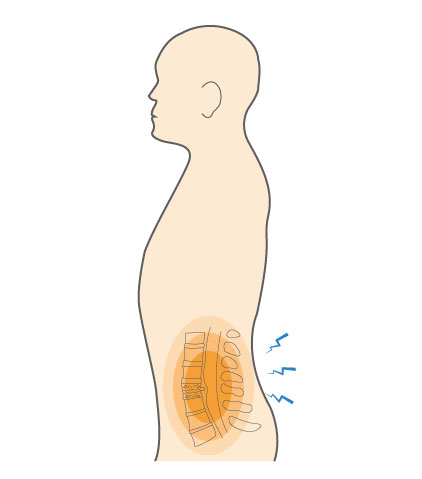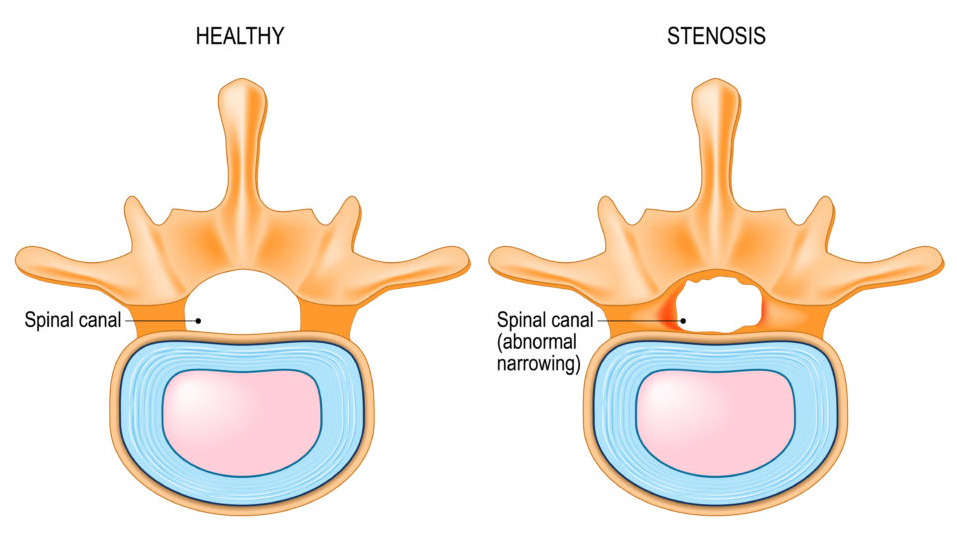Lumbar spinal stenosis is a common lower back problem that occurs when an abnormal spinal narrowing of the spinal canal compresses the spinal cord. This condition, often called lumbar stenosis, can lead to nerve compression, which may cause pain, tingling, or leg weakness. The spinal cord connects the brain to nerves throughout the entire body. It sits within the spinal canal, a channel within the bones of the spine (vertebrae). When pressure is placed on the lumbar spinal cord due to spinal narrowing, it can cause symptoms throughout the body, including the legs and feet, often mimicking sciatica.
Lumbar spinal stenosis is mostly a degenerative condition that affects people who are typically age 60 and older.



